For example, if the borrowing amount is a maximum of 30%, a user who deposits 100 DAI into the protocol can borrow up to 30 DAI worth of another asset. Lending protocols like Maker and Aave require users to deposit some collateral (e.g. ETH). In line with the Trust Project guidelines, the educational content on this website is offered in good faith and for general information purposes only. BeInCrypto how to buy ankr prioritizes providing high-quality information, taking the time to research and create informative content for readers. While partners may reward the company with commissions for placements in articles, these commissions do not influence the unbiased, honest, and helpful content creation process. Any action taken by the reader based on this information is strictly at their own risk.
The Builder API(opens in a new tab) is a temporary solution aimed at providing a working implementation of proposer-builder separation, albeit with higher trust assumptions. In both proof-of-work and proof-of-stake, a node that builds a block proposes it for addition to the chain to other nodes participating in consensus. A new block becomes part of the canonical chain after another miner builds on top of it (in PoW) or it receives attestations from the confirmed transaction coinbase how many confirmations for bitcoin deposit gdax majority of validators (in Pos). Without rational searchers seeking and fixing economic inefficiencies and taking advantage of protocols’ economic incentives, DeFi protocols and dapps in general may not be as robust as they are today. Users can then borrow assets and tokens from others depending on what they need (e.g. you might borrow MKR if you want to vote in a MakerDAO governance proposal) up to a certain percentage of their deposited collateral.
- It refers to the value derived from controlling transaction inclusion and ordering.
- While MEV is a theoretic maximum, the term Realized Economic Value (REV) is sometimes used to refer to the amount actually extracted.
- When Ethereum’s blockchain shifted to proof-of-stake during The Merge in 2022, the term shifted to “maximal extractable value” to reflect a wider group of methods miners and validators used.
- UniswapX offers gas-free swaps for specific token pairs and trade sizes within their internal network.
MEV Boost retains the same workings of the original Flashbots auction, albeit with new features designed for Ethereum’s switch to proof-of-stake. Searchers still find profitable MEV transactions for inclusion in blocks, but a new class of specialized parties, called builders, are responsible for aggregating transactions and bundles into blocks. A builder accepts sealed-price bids from searchers and runs optimizations to find the most profitable ordering. Searchers look for lucrative MEV opportunities and send transaction bundles to miners along with a sealed-price bid(opens in a new tab) for inclusion in the block. The miner running mev-geth, a forked version of the go-ethereum (Geth) client only has to choose the bundle with the most profit and mine it as part of the new block. To protect miners from spam and invalid transactions, transaction bundles pass through relayers for validation before getting to miners.
Indice
What is the solution to MEV extraction abusers?
These range from protocol-level changes that include modifications to make MEV fairer and more predictable to MEV-sharing mechanisms like the one seen with Jito, as MEV yield is broadly distributed among staking participants. As previously mentioned, MEV hinges on the ability of block producers to manipulate the order of transactions within a block, which stems from their access to the mempool. By analyzing this pool, block producers can predict the potential impact of transactions on the market and exploit that knowledge to extract value. Put simply, MEV extraction is similar to how crowd controllers can rearrange people standing in a queue.
Front-running is the process of inserting transactions before a subsequent transaction with the sole intent of making a profit from the subsequent transaction. Front-running is popular because it generates more lucrative arbitrage opportunities than would have otherwise been possible. This means that, If at any point, due to fluctuations in the price of ETH, the value of the loan rises above 80% of the collateral, the AAVE smart contract will trigger a liquidation event. Other forms of MEV are considered more extractive as it relates to the outcome for the user. If you’re interested in tracking these types of activities, check out zeromev to watch MEV unfold live and see how the MEV impacts the settlement of the targeted transactions. The Builder API is a modified version of the Engine API(opens in a new tab) used by consensus layer clients to request execution payloads from execution layer clients.
Opportunities for distributed block builders, pre-confirmations, and in-protocol frontrunning protection are all exciting potential goals. The searcher swaps the relative sizes of distributed exchange liquidity pools during the front-run and resets them how to buy epic cash in the back-run. This type of MEV can sometimes result in the sandwiched transaction receiving almost nothing in return for their swap. Consider a situation where the price of Ethereum is $2000 on Uniswap, but at the same time, it is $1990 on Sushiswap.
Widespread implementation of the Builder API will encourage greater competition among block builders, which increases censorship resistance. As validators review bids from multiple builders, a builder intent on censoring one or more user transactions must outbid all other non-censoring builders to be successful. This dramatically increases the cost of censoring users and discourages the practice. The relayer is still responsible for validating transaction bundles before passing them to the proposer. However, MEV Boost introduces escrows responsible for providing data availability by storing block bodies sent by builders and block headers sent by validators.
Other MEV extraction strategies include backfilling, which involves including your transaction after the block filler’s order, and sandwich attacks, where block fillers place two transactions around yours to manipulate the price in their favor. With that, for some highly competitive MEV opportunities, such as DEX arbitrage, searchers may have to pay 90% or even more of their total MEV revenue in gas fees to the validator because so many people want to run the same profitable arbitrage trade. This is because the only way to guarantee that their arbitrage transaction runs is if they submit the transaction with the highest gas price.
Ethereum’s Roadmap for MEV
The increasing complexity of value transfers created a new frontier of MEV opportunities. These early searchers now explore the boundaries of complex MEV with multi-token, multi-DEX, and even cross-chain MEV. In the diagram, you’ll see the arbitrage transaction (red) immediately follows the target transaction (green), thus successfully extracting the arbitrage opportunity by buying low index a and then selling high index B.
Understanding MEV is crucial for informed participation in the crypto ecosystem. While risks exist, ongoing efforts aim to mitigate them and harness the potential benefits of this complex phenomenon. To combat the negatives of MEV strategies, the crypto community is actively seeking solutions to address these concerns.
Mask Network
Many DeFi projects rely on economically rational actors to ensure the usefulness and stability of their protocols. For instance, DEX arbitrage ensures that users get the best, most correct prices for their tokens, and lending protocols rely on speedy liquidations when borrowers fall below collateralization ratios to ensure lenders get paid back. Flashbots is an independent project which extends execution clients with a service that allows searchers to submit MEV transactions to validators without revealing them to the public mempool.
Some of the techniques used to extract MEV include:
Therefore, actors that take advantage of arbitrage are not harming other users and are instead simply reacting to naturally occurring price fluctuations. Normal arbitrage is a healthy and necessary part of maintaining price stability within DeFi ecosystems. Several early searchers eventually coalesced into a collective known as Flashbots that organized a system for searchers to bid for miners to include specific transactions. It refers to the value derived from controlling transaction inclusion and ordering. We find MEV in blockchain due to the necessity for transactions to be ordered and included into a block prior to commitment on-chain. While MEV is a theoretic maximum, the term Realized Economic Value (REV) is sometimes used to refer to the amount actually extracted.
In MEV, miners extract value by manipulating the order in which transactions are included in a block and taking advantage of arbitrage opportunities or other market inefficiencies. Miners can also engage in transaction frontrunning, where they attempt to exploit price movements by executing trades before other users. Miners exclude certain transactions from the blockchain to manipulate the market.
Validators do get a portion of the full MEV amount anyway because searchers are willing to pay high gas fees (which go to the validator) in exchange for higher likelihood of inclusion of their profitable transactions in a block. Assuming searchers are economically rational, the gas fee that a searcher is willing to pay will be an amount up to 100% of the searcher’s MEV (because if the gas fee was higher, the searcher would lose money). Thanks to protocols like UniswapX that actively integrate advanced tools like private relays, auction-based routing, and decentralized MEV protection mechanisms, you can experience a more level playing field within DeFi. UniswapX integrates with Flashbots Protect, allowing users to opt in to a more distributed MEV protection mechanism that competes with miners or validators for extracted value. This auction system and yield distribution approach aims to prevent any single entity from dominating the MEV landscape and makes sure users benefit from a part of the extracted MEV yield. MEV can be mitigated in blockchain by improving the transparency and fairness of transaction processing, reducing the complexity of smart contracts, and developing MEV extraction tools to improve the incentives of miners.
When Ethereum’s blockchain shifted to proof-of-stake during The Merge in 2022, the term shifted to “maximal extractable value” to reflect a wider group of methods miners and validators used. In theory MEV accrues entirely to validators because they are the only party that can guarantee the execution of a profitable MEV opportunity. This represents a common example of an MEV extraction strategy, highlighting the potential for block producers to extract value at the expense of other users while benefitting from the arbitrage opportunity.
MEV extraction ballooned in early 2021, resulting in extremely high gas prices in the first few months of the year. The emergence of Flashbots’s MEV relay has reduced the effectiveness of generalized frontrunners and has taken gas price auctions off-chain, lowering gas prices for ordinary users. It’s crucial to first acknowledge that MEV isn’t inherently positive or negative.

